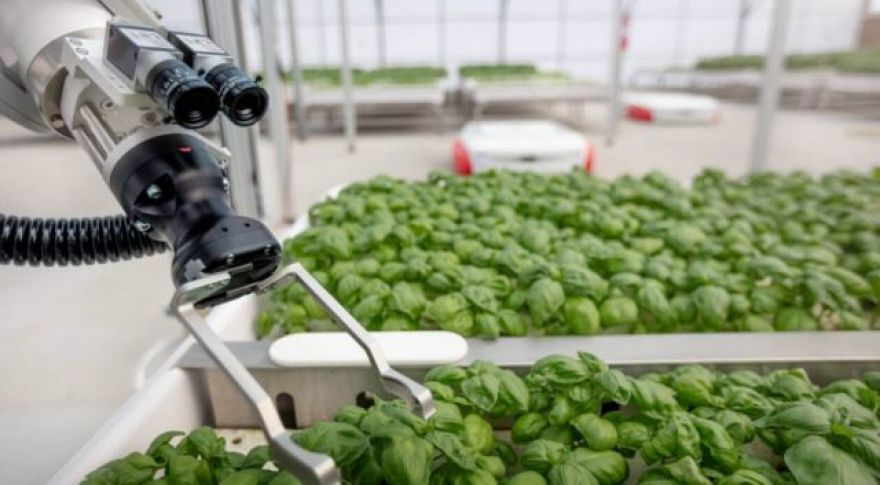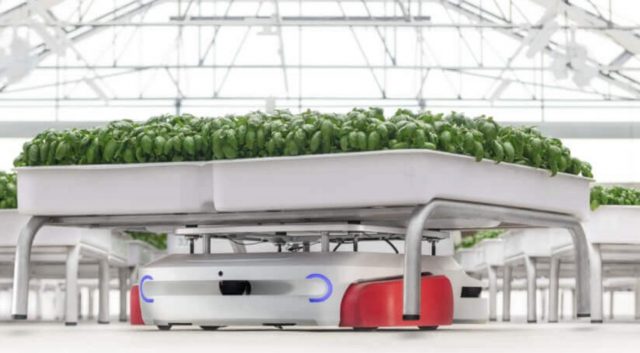
This California Greenhouse is Run by Robots
Northern California-based Iron Ox was born from the realization that conventional American agriculture negatively impacts the environment in a multitude of ways. The type of farming most of us are familiar with uses as much as 70 percent of the world’s fresh water supply and produces up to 1.19 gigatons of greenhouse gasses every year. There’s also the issue of wasted produce, with up to 40 percent of fruits and veggies ending up in a landfill before ever reaching a consumer.
Iron Ox uses two house-designed, AI-supported robots to perform most repetitive farming tasks and ensure resources are used efficiently. The first of these, called Grover, makes up the brawn of Iron Ox’s robotic crew. Able to lift more than 1,000 pounds, Grover helps move plant “modules” (i.e. planter boxes) around the greenhouse. Grover also helps water and harvest crops in tandem with Phil, the company’s brainier robot farmer. Phil monitors and delivers each module’s water, nutrient mix, and pH levels to maximize crop yield and quality while making sure resources aren’t overused.
Grover and Phil are designed to work in greenhouses, meaning Iron Ox has to plop down a facility before bringing its leafy greens, fruit, and other produce to a particular region. But the company itself says this isn’t a problem. While Iron Ox’s first facility sits in the San Francisco Bay Area, it just wrapped up construction on a 535,000-square foot greenhouse in Lockhart, Texas, where it will bring sustainably-grown produce to the entire state.

Iron Ox’s Grover robot. (Photo: Iron Ox)
“Iron Ox’s Lockhart facility is the blueprint for sustainable produce farming near urban centers across the nation and around the world,” Iron Ox spokesperson Ranggin Hedayat told ExtremeTech. “We want to make food a renewable resource for everyone. While our vision is global, we know that everything we achieve will be through our local efforts. Food grown at an Iron Ox facility will stay nearby, ensuring our surrounding communities have access to fresh produce that is grown recently, locally and sustainably.”
As with any other setting, the integration of robots into agriculture raises concerns regarding job displacement. Conventional farming has long presented employment opportunities for lower-income communities and immigrants; while those opportunities are , many don’t want to see them disappear altogether. Iron Ox’s perspective is that now is the time for an agricultural revamp. The company says farming is facing a labor crisis as young workers turn away from grueling, environmentally detrimental work, and that its technology may very well present a more positive alternative.
“Agriculture is long overdue for a technology update,” Hedayat said. “By introducing technology to farming, we can not only increase efficiency, become more sustainable, but also we can equip workers with tech skills that are highly beneficial in a digital world.” Whether Iron Ox elects to support such career transitions via internships, training programs, or other means is something we’ll have to wait to find out.
Iron Ox’s produce is currently available at Whole Foods, Mollie Stone’s Markets, and Bianchini’s Market in northern California, with central Texas locations to come later this year.
Now Read: